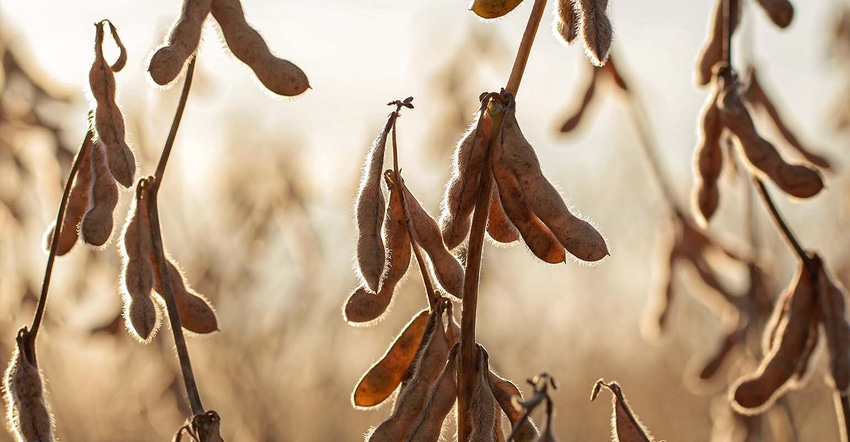
Hot and dry South American weather issues have been beneficial for U.S. soybean futures prices. Soybean futures have been in an uptrend since December. With tight ending stocks in the United States and smaller global ending stocks, the world needs a record crop from South America in order to alleviate shrinking global supplies.
Recent heat stress is provoking fears that the soybean crop in Brazil and Argentina will be reduced, and potentially not the monster crop that many importing nations were hoping for. This fear has pushed soybean prices through the $13.00 price mark all the way up to $14.00!
As prices work higher and images surface on social media about parched soils and crops in portions of Brazil and Argentina, it is getting plenty of folks in the agriculture world “bulled up.” If the drought continues, prices may indeed work higher in the coming months, yet there are three things to be mindful of in the coming weeks.
USDA report
The January 12 USDA report is indeed “the big one.” All categories on the spreadsheet can be tweaked; yield, total supply, old crop carryout, new crop demand and global supplies.
Will the USDA reduce the crop size for the Brazil crop (currently pegged at 144 million metric tons) or the Argentina crop (currently marked at 49.50 million metric tons)?
Will the USDA increase the size of the U.S. yield from the fall harvest (currently set at 51.2 bushels per acre)? Will there be an increase to U.S. ending stocks for the 2021/22 crop year (currently estimated at 340 million bushels)? The USDA will release Quarterly stocks with the information as well. The report by itself will have traders and computer algorithms on edge, creating a likely volatile trading day.
Three-day holiday weekend
Shortly after the USDA report is released occurs a three-day holiday weekend. The markets close to honor and observe Martin Luther King Jr. Day.
This year, that holiday occurs on Monday, Jan. 17. When the markets re-open on the following Tuesday, trade usually focuses on the weather forecast in South America, and how much rainfall actually occurred in South America over that three-day holiday weekend. Many years, there is a “saving rain” that occurs just in the nick of time to take the desperation, fear, and weather premium out of the market.
Seasonals
Looking at seasonal charts and seasonal chart patterns, there is a very strong 5-year price pattern and 15-year price pattern that suggests the March soybean futures achieve a price peak around Jan. 19. Price then have a strong tendency to slide lower until month end.
Putting it all together
Curiosity got the best of me, and so I looked back at 15 year’s worth of USDA reports, dates, and price information.
I put together this chart which shows the date of the January USDA report for each specific year, the date of the Martin Luther King Jr. three-day holiday weekend, and how March soybean futures performed during those two to three weeks.
The bottom line, even with one year not having a January USDA report (2019), 13 out of 15 years, March soybean futures prices fell lower during the last two weeks of January.
The average price drop from the price high on the January USDA report day, to the price low on the last trading day of January was 55 cents.
Depending on when the USDA report falls, and when the three-day holiday weekend occurs, there can be some price shifting and maneuvering during those few trading days.
While past performance is not indicative of future results, there is definitely a strong soybean price seasonal which suggests the March soybean futures have a tendency to fall lower into the end of January, especially on years where the price of soybean futures had been rallying into the January USDA report (like this year).
Does a seasonal price high in January mean that the soybean rally is forever done for that year? Of course not, just look at how prices behaved last year during February through May. But it is important to be aware of the January drop.
Reach Naomi Blohm: 800-334-9779, Twitter: @naomiblohm, and [email protected].
Disclaimer: The data contained herein is believed to be drawn from reliable sources but cannot be guaranteed. Individuals acting on this information are responsible for their own actions. Commodity trading may not be suitable for all recipients of this report. Futures and options trading involve significant risk of loss and may not be suitable for everyone. Therefore, carefully consider whether such trading is suitable for you in light of your financial condition. No representation is being made that scenario planning, strategy or discipline will guarantee success or profits. Any decisions you may make to buy, sell or hold a futures or options position on such research are entirely your own and not in any way deemed to be endorsed by or attributed to Total Farm Marketing. Total Farm Marketing and TFM refer to Stewart-Peterson Group Inc., Stewart-Peterson Inc., and SP Risk Services LLC. Stewart-Peterson Group Inc. is registered with the Commodity Futures Trading Commission (CFTC) as an introducing broker and is a member of National Futures Association. SP Risk Services, LLC is an insurance agency and an equal opportunity provider. Stewart-Peterson Inc. is a publishing company. A customer may have relationships with all three companies. SP Risk Services LLC and Stewart-Peterson Inc. are wholly owned by Stewart-Peterson Group Inc. unless otherwise noted, services referenced are services of Stewart-Peterson Group Inc. Presented for solicitation.
The opinions of the author are not necessarily those of Farm Futures or Farm Progress.
About the Author(s)
You May Also Like






